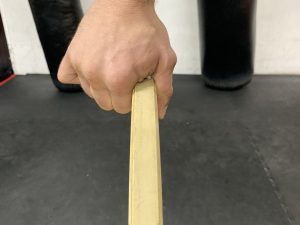Grip strength is an important functional measure in both diagnosis and evaluation of progress. A 10% difference in grip strength between sides is within the limits of normal, however more than a 20% difference between sides may indicate either a strength deficiency that could have contributed to the development of the injury, or more commonly a loss of strength secondary to the injury. A 50% or greater loss in strength is usually suggestive of a more serious injury.
We typically measure grip strength in 3 different positions; the power grip, pinch grip and key grip.
The power grip is what we usually think of when it comes to grip strength measurement, essentially a global measurement of grip. This is best measured using a grip dynamometer. There are a range of different types of dynamometers on the market, with electronic models tending to be cheaper but less accurate than the analogue versions. The power grip should be tested with the arm down by the side.
The pinch grip refers to gripping between the thumb and the pads of the (usually the index) finger. The key grip refers to gripping the broad surface of the thumb against the side of the hand. Both the pinch and key grip can be tested with a blood pressure cuff or biofeedback cuff. Blow the cuff up to a set inflation point (e.g. 40mmHg) and then have the athlete grip and record the rise in pressure. Compare to the opposite side.
The pinch and key grips can also be tested as an endurance test. A useful way to do this is to perform a plate hold, gripping a plate of a predetermined weight (10kg is a good starting point for many athletes) and comparing the hold time between sides.
The type of grip measured will depend on the nature of the injury. Thumb injuries should be tested with the key and pinch grips, CMC joint injuries with the pinch and power grip and knuckle injuries with just the power grip.
With all of these measures, we can record both the pain-free grip strength, as well as (if pain allows) the maximal grip strength. Unless the athlete is highly irritable, 3 trials should be performed for each.

